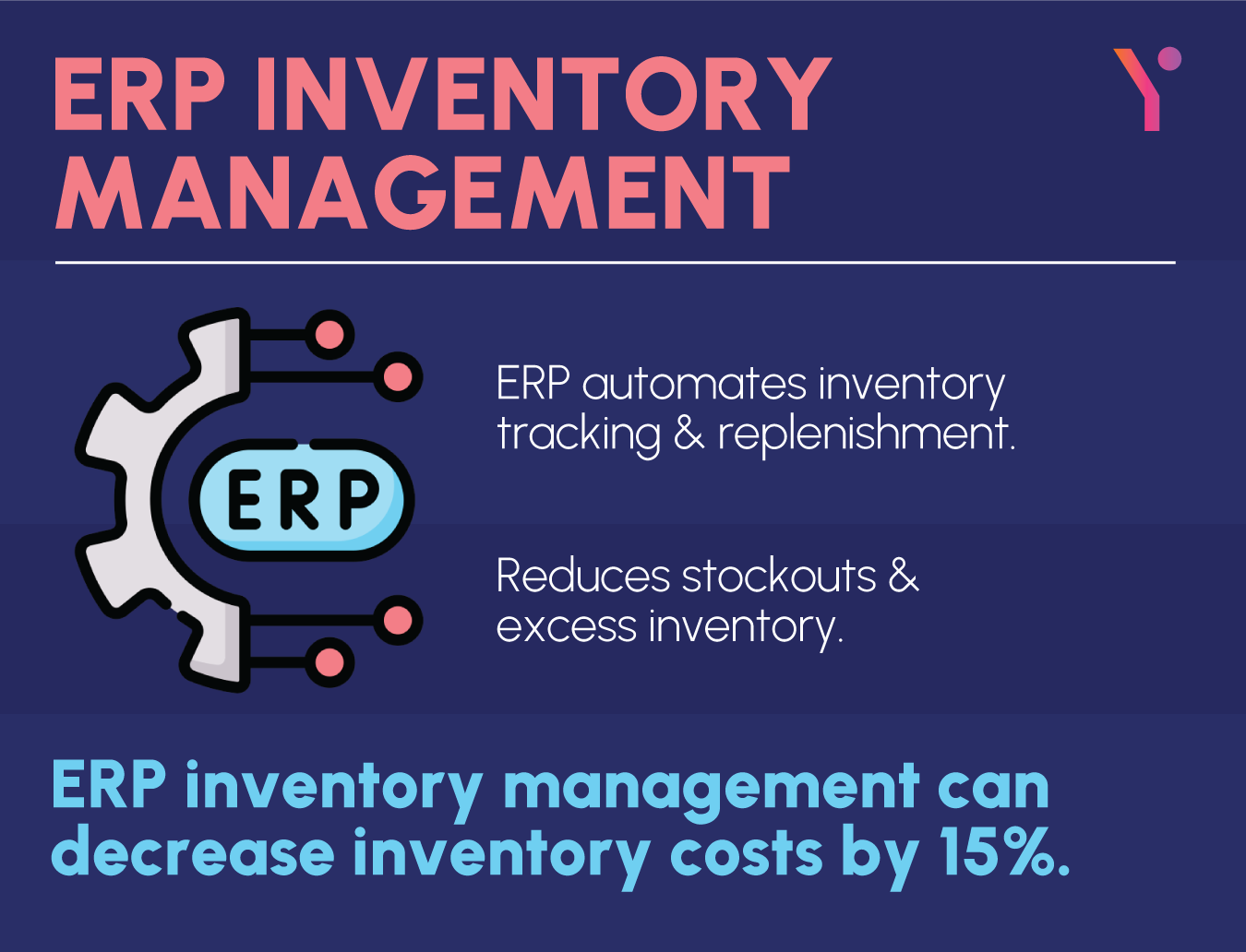Introduction
ERP inventory management is directly associated with a business’s success. Businesses can use ERP systems to “upgrade” a host of their functions, all thanks to the ERP solution-related tools. This means they will be making highly beneficial data-driven decisions.
ERP inventory management is considered to be a vital component in today’s business operations. It involves the utilisation of Enterprise Resource Planning (ERP) systems to optimise and streamline inventory processes. By integrating a host of functions such as sales, warehousing, and purchasing, ERP inventory management offers real-time visibility into stock levels, letting businesses make informed decisions.
Today, industry experts are of the opinion that ERP inventory management is vital for the maintenance of optimal stock levels, improving customer satisfaction, and decreasing costs. However, traditional inventory management methods usually struggle with slow processes, inaccuracies, and inefficiencies.
| Challenges in Traditional Inventory Management | Impact |
Lack of real-time visibility | Overstocking, stockouts |
Manual data entry and calculations | Time-consuming, errors |
Inefficient order fulfilment | Customer dissatisfaction, delayed deliveries |
Poor demand forecasting | Lost sales, excess inventory |

If you want to get a better idea of the information presented in the table above, feel free to contact FuturByte. We are a reputed ERP software development company that will be of great assistance to you. You may also inquire us about the benefits of ERP inventory management system.
Understanding ERP Inventory Management
Today, ERP inventory management takes into account a host of functionalities that are meant to streamline the inventory process. The core components include:
Inventory Valuation and Costing
Precisely determining the inventory value for financial reporting purposes. A host of valuation methods (Average Cost, FIFO, LIFO) can be implemented, depending on business requirements.
Warehouse and Distribution Management
Optimising warehouse operations, such as shipping, packing, picking, put-away, and receiving. By integrating with warehouse management systems (WMS), ERP inventory management improves order fulfilment speed and accuracy.
Procurement and Purchase Management
Performing efficient management of the procurement process. This includes supplier selection, purchase order creation, and receipt of goods. The right ERP inventory management system goes on to improve supplier relationships, streamline purchasing activities, and permit timely delivery of materials.
Demand Forecasting and Planning
Performing analysis of market trends, historical sales data, and a host of associated factors to predict future demand. Precise forecasting aids in optimising inventory levels, ensuring product availability, and decreasing carrying costs.
Inventory Tracking and Visibility
Detailed and thorough monitoring of stock levels, movement, and locations within the supply chain. Real-time data offers insights into inventory health, permitting proactive decision-making and preventing overstocking and stockouts.
Are you associated with an organisation that has yet to make good use of inventory tracking and visibility, and wants some beneficial advice on the matter? Just contact FuturByte. We are a reputed software developer also known for manufacturing ERP products, and we can give you the best possible advice based on your case. You may also inquire about an ERP inventory management system model.
Important Features of an ERP Inventory Management System
A reliable ERP inventory management system will incorporate vital features that are meant to support efficient inventory operations. Let’s have a look at these features:
Reporting and Analysis
Offers detailed reports and key performance indicators (KPIs) to identify possible improvement opportunities and monitor inventory performance.
Inventory Valuation Methods
Supports a host of valuation methods such as Average Cost, FIFO, and LIFO to meet taxing and accounting requirements.
Warehouse Management Systems (WMS) Integration
Optimises warehouse operations. This includes from goods attainment to shipping.
Purchase Order Management
Streamlines the procurement process, including order approval, order creation, and supplier selection.
Demand Forecasting Tools
Makes use of statistical models and historical data to predict future demand patterns.
Serial Number and Lot Tracking
Manages products with particular identification requirements, which is especially important for industries such as electronics and pharmaceuticals.
RFID and Barcode Integration
Permits automated data capture for efficient and accurate inventory counting.
Real-Time Inventory Tracking
Offers up-to-date information on product availability, locations, and stock levels.
Are you interested in having an in-depth knowledge of the above-mentioned features or how they can benefit your organisation? Contact FuturByte. We are a globally recognised software developer that can give you beneficial advice on the stated features or any other relevant topic, such as an Inventory management module. You may also ask us about today’s leading topics, such as microservices design and development.
Best Practices for ERP Inventory Management
If your organisation is looking to maximise the gains offered by ERP inventory management, you should try to adopt the below-mentioned best practices:
Continuous Improvement
Regularly analyse and review inventory performance. This should be done to take into account areas for improvement and for the purpose of implementing changes.
Regular Inventory Audits
Perform physical inventory counts to identify discrepancies and verify system accuracy.
Supply Chain Collaboration
Harness reliable relationships with suppliers to enhance collaboration and decrease supply chain disruptions.
Effective Demand Forecasting
Make use of advanced forecasting methods. Additionally, regularly refine and review forecasting.
Inventory Optimisation Techniques
Apply strategies such as cycle counting, ABC classification, and reorder point analysis. This should be done to optimise inventory levels.
Data Cleansing and Accuracy
Keep up-to-date and accurate inventory data via data cleansing processes and regular audits.
Choosing the Appropriate ERP System for Inventory Management
Selecting the right ERP inventory management system is definitely an extremely important decision that affects business operations. There are a host of factors that should be considered here, such as:
Vendor Support
Evaluating the vendor’s track record, reputation, and the level of customer support.
ROI and Cost
Make an assessment of the total ownership costs, including ongoing maintenance, licensing, and implementation, against the potential return on investment.
Integration Capabilities
Guarantee seamless integration with a host of other business systems, such as production, sales, and accounting.
Scalability
Contemplate the system’s capability to grow with your business as it grows.
Inventory Complexity
Perform an evaluation of the system’s ability to take care of your inventory’s complexity, including serial number/lot tracking, product variations, and multiple locations.
Business Size and Industry
The ERP system should properly align itself with the organisation’s industry requirements and particular needs.
The careful evaluation of the above-mentioned factors will allow businesses to go with an ERP inventory management solution that meets their particular requirements and drives business-related success.
Furthermore, if you believe that you need helpful advice regarding the above points based on your unique case, call FuturByte. We are a renowned cloud POS system developer who can give you the best advice based on your case. Feel free to ask us on any topic relevant to this blog, such as automated inventory management.
Inventory Optimisation Techniques
There are a host of inventory optimisation techniques that can be applied via the right software utility to decrease costs and improve efficiency. Let’s look at them in some detail:
Demand Forecasting
Use market trends, statistical methods, and historical data to predict future demand.
Vendor-Managed Inventory (VMI)
Transfers inventory management and ownership responsibility to the supplier.
Consignment Inventory
Make arrangements for suppliers to store inventory at the customer’s location, decreasing the customer’s inventory-carrying expenses.
Safety Stock
Keep a buffer stock of inventory to safeguard against surprising demand fluctuations or potential supply chain disruptions.
Reorder Point Analysis
Decide the optimum reorder point for every inventory item to avoid excess inventory and stockouts.
Cycle Counting
The regular counting of a subject of inventory items to identify discrepancies and verify system accuracy.
ABC Classification
Categorising inventory items depending on their value to note which items demand closing control and monitoring.
By implementing the above-stated techniques, organisations can decrease carrying costs, optimise inventory levels, and enhance the overall inventory performance.
Tackling The Challenges
The implementation and effective utilisation of an ERP inventory management system can present a host of challenges. Some of the most common of these are as follows:
System Limitations
There are a host of ERP systems that do not present the specific functionalities demanded by certain organisations or industries.
Cost Considerations
The ongoing maintenance costs and initial investment in an ERP can be significant.
Change Management
Overcoming any sort of resistance to change and training the workforce on new processes is vital for a successful implementation.
Integration Complexities
The integration of the ERP system with a host of systems, such as transportation management systems and WMS, can be complicated.
Data Quality
Making sure there is accurate and complete inventory data is vital for effective management.
Any organisation that aims to overcome these challenges should carefully plan the implementation process, offer adequate training, and continuously monitor and improve the system.
Concluding Remarks
This blog has solidified the notion that effective ERP inventory management is vital for organisational success. By implementing best practices and leveraging ERP systems, any given organisation can decrease costs, optimise inventory levels, and improve customer satisfaction. Whether it is advanced analytics or real-time visibility, ERP solutions offer the tools to make informed decisions and steer growth.
Finally, if you need further information regarding any of the points discussed in this blog, don’t hesitate to contact FuturByte. We are a globally recognised app development company that will take a keen interest in your unique case and give you the best possible advice. You should also contact us with any software-related issues, such as serverless web development, app development, and others.
Frequently Asked Questions
A cloud POS system integrates with an ERP inventory management by performing real-time synchronising of sales data. Whenever a product is sold at the Point of Sale, the ERP system gets quickly updated, making sure there are accurate inventory levels. This integration optimises ordering, prevents stockouts, and offers beneficial sales data for analysis.
Yes. Today, we have ERP systems that can be customised to suit a host of industries. They present flexibility to adapt to particular business processes, regulatory requirements, and terminology. This customisation ensures optimal efficiency and fit for a host of sectors such as healthcare, retail, and manufacturing.
Data analytics in ERP systems offer beneficial insights into organisational performance. This happens by processing massive amounts of data. It assists in optimising operations, identifying trends, and improving decision-making, and can unveil possible growth opportunities.
Have questions or feedback?
Get in touch with us and we‘l get back to you and help as soon as we can!




